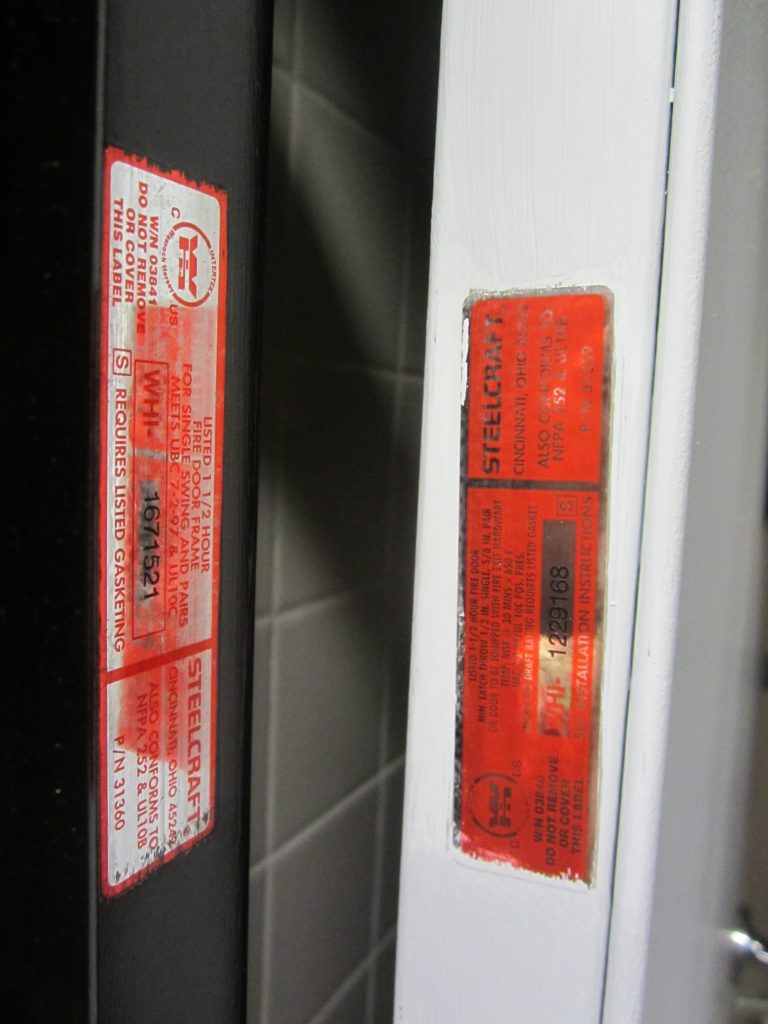 Requirements for the annual inspection of fire door assemblies initially appeared in the NFPA 80 standard in the 2007 edition. The motivation for this change was the non-code-compliant condition of many existing fire door assemblies, and the likelihood that these deficiencies would affect the ability of the assemblies to perform as designed and tested if a fire occurred.
Requirements for the annual inspection of fire door assemblies initially appeared in the NFPA 80 standard in the 2007 edition. The motivation for this change was the non-code-compliant condition of many existing fire door assemblies, and the likelihood that these deficiencies would affect the ability of the assemblies to perform as designed and tested if a fire occurred.
The 2007 edition of NFPA 80 was first referenced by the 2009 model codes. When a model code (typically a fire code used throughout the life of the building) requires fire door assemblies to be maintained in accordance with NFPA 80, annual inspections are required by reference. Unfortunately, code officials in some jurisdictions have not enforced the annual inspection requirements.
A notable exception is the group of accrediting organizations that survey health care facilities on behalf of CMS – Centers for Medicare and Medicaid Services; the Joint Commission is one of these accrediting organizations. When CMS adopted the 2012 edition of NFPA 101 in July of 2016, the accrediting organizations began enforcing the requirements for fire door assembly inspections. This means that thousands of hospitals, nursing homes, and other health care facilities must conduct and document these inspections, and correct deficiencies.
The 2007 edition of NFPA 80 includes 11 inspection criteria – which was increased to 13 criteria in later editions. The standard includes requirements for the documentation and the archiving of the reports, procedures for testing the operation of fire door assemblies, as well as qualifications for inspectors. The 2013 edition of NFPA 80 added requirements for the inspection of fire door assemblies after installation and after maintenance work, to ensure that these openings are code-compliant from the start. The 2012 edition of NFPA 101 adopted by CMS references the 2010 edition of NFPA 80, which requires only the annual inspections. Any deficiencies found during the inspection of a fire door must be corrected “without delay.”
There is more information published on the Fire Door page of iDigHardware, including a recent Decoded article about the importance of fire door inspections in multi-family residential buildings, a Quick-Question (QQ) post about fire door inspector qualifications, and the PDF of a laminated fire door inspection card that is available from Allegion. There is also a video about fire door inspection available from the Steel Door Institute (SDI). After reviewing these materials, proceed to the quiz questions below.
~~~
1. Which of the following is NOT one of the NFPA 80 criteria for fire door inspection?
- Measure clearance dimensions at the head, jambs, meeting stiles, and bottom of door.
- Make sure the door has a threshold.
- Test to see if the door closes and latches properly.
- Look for missing hardware and non-compliant field modifications.
2. According to the 2013 edition of NFPA 80 and subsequent editions, when are fire door assemblies required to be inspected?
- At least annually
- When they are installed
- After maintenance work is complete
- A & B only
- A & B & C
3. Which of the following may be used as evidence that a fire door inspector is qualified to perform inspections?
- Certificate of completion from a training program
- Documentation of work experience
- Credential from a recognized organization
- Any of the above are acceptable according to NFPA 80.
Answers: 1 – B, 2 – E, 3 – D
